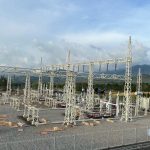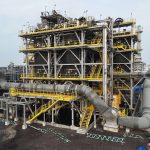Liga Asuransi – Indonesia is at a crucial point in its national energy transformation journey. With a commitment to increase the renewable energy mix to 23% by 2025 and 31% by 2050, the government is aggressively promoting the development of innovative green energy projects. One technology currently attracting attention is floating solar power plants (PLTS), which utilize the water surface as a platform for solar panel installations.
The Saguling Floating Solar Power Plant (PLTS Terapung Saguling), currently under construction in the Saguling Reservoir, West Java, is one of the largest and most strategic projects in Indonesia. With an installed peak capacity of 92 MW, the project is expected to be an efficient solution to address land constraints and significantly increase clean energy production.
In addition to delivering technological innovation, this project also marks Indonesia’s commitment to reducing carbon emissions and accelerating the green energy transition. However, as with any major project, technical challenges and operational risks cannot be ignored. Therefore, the role of insurance protection in supporting project sustainability becomes increasingly crucial.
L&G Insurance Brokers present as a professional partner ready to help ensure your renewable energy projectprotectedfrom various risks. With extensive experience in energy project insurance, we provide the right protection solutions, from construction to operation, to ensure your investment runs smoothly and securely.
Background of the Saguling Floating Solar Power Plant Project
The Saguling Reservoir, located in West Java, is one of the largest reservoirs in Indonesia and has long been used as a source of electricity through hydroelectric power plants (PLTA). However, limited land area in the area makes developing land-based solar energy a challenge.
To address this issue, PT PLN (Persero) has taken an innovative approach by initiating the construction of a Floating Solar Power Plant (PLTS Terapung) on the surface of the Saguling Reservoir. This project has an installed capacity of 92 megawatts-peak (MWp), making it one of the largest floating PLTS in Indonesia and Southeast Asia.
The project began construction in early October 2025 and is targeted to be commercially operational in November 2026. This development is part of the national strategy to increase the use of renewable energy, reduce dependence on fossil fuels, and achieve the clean energy mix target according to the National Energy General Plan (RUEN).
The Saguling Floating Solar Power Plant is also expected to have a positive impact by optimizing the use of water resources in the reservoir and reducing water evaporation. By utilizing the reservoir’s surface as a solar panel installation area, this project is not only land-efficient but also offers significant environmental benefits.
This initiative is an important step that demonstrates how technology and innovation can play a role in addressing energy challenges while supporting the national sustainability agenda.
The Technology and Innovation Behind Floating Solar Power Plants
Floating solar power plants (PLTS) are a technological innovation that allows solar panels to be installed on water surfaces, such as reservoirs or lakes. This technology offers several advantages over land-based PV systems, particularly in terms of efficiency, land use, and environmental impact.
In the Saguling Floating Solar Power Plant project, solar panels are mounted on floating racks specially designed to withstand water and weather conditions. This system allows for flexible installation and easy adjustment to changing water levels. Furthermore, the floating position helps naturally cool the solar panels, increasing energy conversion efficiency.
Another innovation is the integration of a smart energy management system that optimizes electricity output settings and ensures a stable supply to the PLN electricity grid. This technology also monitors panel condition and performs predictive maintenance, reducing downtime and operational costs.
Environmentally, floating solar power plants reduce water evaporation in reservoirs, which is crucial for water conservation and the surrounding ecosystem. By utilizing underutilized water surfaces, this project serves as a concrete example of how green technology can address land constraints while increasing renewable energy capacity.
The technology and innovation applied to the Saguling Floating Solar Power Plant opens up opportunities for replicating similar projects in various other locations in Indonesia, which have high water potential and clean energy needs.
Project Impact on the National Energy System
The 92 MWp Saguling Floating Solar Power Plant (PLTS) project significantly contributes to clean energy development in Indonesia. With this additional capacity, the project is capable of providing sufficient electricity to meet the needs of tens of thousands of households, while reducing reliance on fossil fuels that negatively impact the environment.
In addition to increasing national renewable energy capacity, this project also supports the government’s target of achieving a 23% renewable energy mix by 2025 and 31% by 2050, as outlined in the National Energy Master Plan (RUEN). The Saguling Floating Solar Power Plant (PLTS Terapung Saguling) strengthens energy source diversification and accelerates the transition to a low-carbon economy.
The success of this project is expected to serve as a model for the development of other floating solar power plants in various reservoirs and waters across Indonesia, which have so far been underutilized. Replication of this project could help accelerate the development of renewable energy infrastructure and support national emissions reduction targets.
In addition, this project also has the potential to improve the reliability of the electricity system by adding stable and sustainable energy sources, thereby reducing peak loads from fossil fuel power plants and increasing the security of electricity supply.
Overall, the Saguling Floating Solar Power Plant is not just a power generation project, but also a strategic step in the national energy transformation that has a broad impact on Indonesia’s environmental and economic sustainability.
The Role of Insurance and Risk Mitigation
A large project like the Saguling Floating Solar Power Plant is not without risks that could hamper its smooth construction and operation. These risks need to be identified and properly managed to protect the substantial investment and achieve the project’s targets.
Technical risksSuch as solar panel damage due to extreme weather, leaks in floating racks, or electrical system disruptions can cause downtime and financial loss.construction risksduring construction, such as work accidents, delays, or material damage, also need special attention.
Environmental and social risksincluding potential impacts on aquatic ecosystems and communities surrounding the reservoir which must be managed appropriately to maintain the sustainability of the project.
In this case, insurance is an important solution to anticipate these risks. Some types of insurance commonly used in renewable energy projects include:
- Construction All Risks (CAR) Insurance: Protects against risks during the construction period, including physical damage and work accidents.
- Operational All Risks (OAR) Insurance: Provides protection during operational periods against equipment damage and power production disruptions.
- Third Party Liability Insurance: Covers claims from third parties due to damage or injury that occurs during the project.
- Environmental Liability Insurance: Anticipating the risks of environmental impacts that may arise.
An insurance broker plays a vital role in helping project owners and contractors select the right insurance product for their risk profile and project needs. With optimal insurance protection, financial risk can be minimized, allowing projects to proceed on schedule and according to plan.
Conclusion
The Saguling Floating Solar Power Plant (PLTS) project represents a strategic and innovative step in renewable energy development in Indonesia. With its large capacity and advanced technology, this project not only optimally utilizes limited land but also supports national targets to reduce carbon emissions and increase clean energy supply.
Despite facing various technical, regulatory and operational risk challenges, with proper management and adequate insurance protection support, this project has the potential to become agame changerin Indonesia’s renewable energy sector. The success of the Saguling Floating Solar Power Plant also opens up opportunities for similar projects in other locations with extensive water resources.
Going forward, the trend of renewable energy development, particularly floating solar power plant technology, is predicted to increase, in line with the ever-growing energy needs and the global push towards a low-carbon economy.
To ensure that your investment and development of renewable energy projects are optimally protected, entrust your insurance needs toL&G Insurance BrokersWe offer comprehensive insurance solutions and experience specifically designed to support the sustainability of your renewable energy projects.
Don’t let risk hinder your green innovation progress. Contact us.L&G Insurance Brokersnow and get the best consultation for your renewable energy project protection!
—
DON’T WASTE YOUR TIME AND SECURE YOUR FINANCIAL AND BUSINESS WITH THE RIGHT INSURANCE.
HOTLINE L&G 24 JAM: 0811-8507-773(CALL – WHATSAPP – SMS)
Website: lngrisk.co.id
Email: halo@lngrisk.co.id
—













